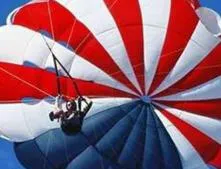Affordable Walking Foot Sewing Machine Prices and Best Options Available Today
The Economic Landscape of Walking Foot Sewing Machines Prices and Factors Affecting Them
Walking foot sewing machines have gained immense popularity among sewing enthusiasts and professional tailors alike. These machines are known for their ability to handle multiple layers of fabric with ease, making them ideal for quilting, leatherworking, and various industrial applications. However, one of the primary considerations for anyone looking to invest in a walking foot sewing machine is its price. This article will delve into the price range of these machines, the factors influencing their costs, and tips for making an informed purchase.
Understanding Price Ranges
Walking foot sewing machines can vary significantly in price, typically ranging from a few hundred dollars for entry-level models to several thousand dollars for high-end industrial machines. Entry-level machines may cost anywhere from $250 to $600, while mid-range models suited for more advanced users generally fall between $600 to $1,200. Professional-grade machines, which offer more features, durability, and higher performance, can start from $1,200 and go beyond $3,000.
For instance, brands like Juki and Consew have established a reputation for offering reliable walking foot sewing machines at various price points. A Juki DNU-1541, a popular choice among professionals, is priced around $1,500, while a Consew 206RB-5 may be found for approximately $800. Consumer-friendly models, such as the Brother PQ1500SL, offer a great entry point for hobbyists at around $400.
Factors Influencing Prices
Several aspects can influence the cost of walking foot sewing machines
1. Brand Reputation Established brands with a long-standing reputation for quality tend to charge more for their machines. This is because they often provide better customer service, warranties, and accessories, which add to their overall value.
2. Features and Technology Advanced features such as computerized settings, automatic thread tension adjustment, built-in stitches, and speed control can significantly raise the price. Machines that are versatile enough to handle a wider range of fabrics may also demand higher prices.
3. Build Quality Professional-grade machines often feature a robust build quality with metal components, which increase their durability and lifespan. In contrast, many entry-level machines are made with plastic parts that may not withstand the rigors of heavy use.
4. Usage Type Sewing machines designed for heavy-duty use or specific fabrics (like leather or canvas) come with a higher price tag. Such machines are engineered to provide better performance under demanding circumstances.
walking foot sewing machine price

5. Included Accessories The variety of accessories included with the sewing machine, such as additional feet, bobbins, or carrying cases, can also affect pricing. Machines marketed as complete packages may present a better value.
Tips for Budgeting and Purchasing
When considering investing in a walking foot sewing machine, it's essential to identify your specific needs before starting your search. Here are some practical tips
1. Assess Your Needs Determine whether you will be using the machine for casual home sewing, professional-grade projects, or something in between. Your use case will greatly influence what features you should seek and what budget is appropriate.
2. Do Your Research Read reviews from other users and watch videos demonstrating the machines in action. This will give you a clearer understanding of how well different models perform in real-world situations.
3. Look for Sales and Discounts Prices can fluctuate based on seasonal sales or clearance events. Keeping an eye on special promotions can save you a significant amount of money.
4. Consider Buying Used If you're on a tight budget, don’t overlook the option of purchasing a used machine from a reputable dealer or trusted seller. Many high-quality sewing machines can still perform well after years of use.
5. Invest in Quality While it might be tempting to buy a cheaper machine, investing in a quality walking foot sewing machine can save you money in the long run by reducing repairs and replacements.
Conclusion
The price of walking foot sewing machines varies widely based on several factors, including brand, features, and intended use. By understanding these aspects and carefully evaluating your own needs, you can make an informed decision that aligns with your budget and sewing aspirations. Whether a beginner or a seasoned professional, the right walking foot sewing machine can significantly enhance your sewing experience and outcomes.
-
Boost Production Efficiency with a Pattern Sewing MachineNewsAug.29,2025
-
Industrial Excellence with the Best Heavy Duty Sewing MachineNewsAug.29,2025
-
Precision and Power with the Best Pattern Sewing MachineNewsAug.29,2025
-
Reliable Bulk Packaging Starts With the Right FIBC Sewing MachineNewsAug.29,2025
-
Advanced Packaging Solutions: Elevate Productivity with Jumbo Bag Sewing Machine and Industrial Stitching EquipmentNewsAug.29,2025
-
High-Performance Solutions for Bulk Packaging: FIBC Sewing Machine and MoreNewsAug.29,2025
-
Maximize Efficiency with an Industrial Cylinder Arm Sewing MachineNewsAug.28,2025


























